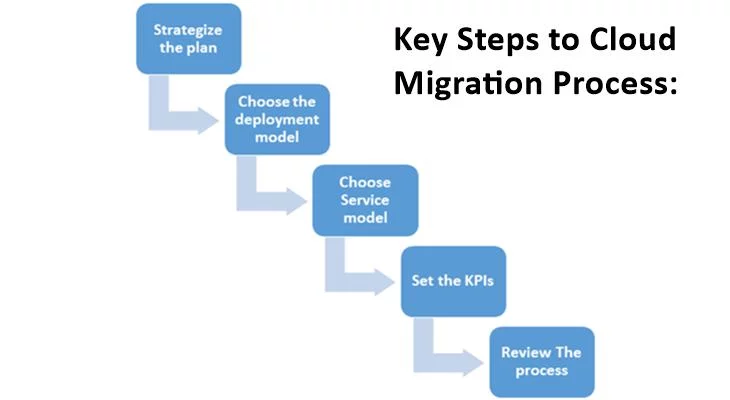Cloud migration is the process of migrating data, applications and other significant business operations from your in-house environment to a cloud computing environment.
Benefits of Cloud Computing
Scalable
Cloud platforms are easy to scale and hence with fluctuating workloads, you can upgrade or downsize the usage plans.
Multiple Cloud Storage Models
You can opt for different types of cloud models such as private cloud, public cloud, hybrid cloud, etc. as per your needs.
Different Service Platforms as per your Business Needs
As per your business requirements, moving to the cloud gives you the opportunity to opt for different service models such as SaaS, PaaS, and IaaS, etc.
Enhanced Security
Moving to cloud platforms enables you to have a better security as the cloud computing platforms have built-in security features.
Ease of Access
With cloud platforms, your employees with authorized access can easily access the data from anywhere, at any given time.
Ease of deployment
Cloud platforms are easy to deploy and much less complicated to work on as compared to your locally hosted environments.
Streamlining the Work
Cloud platforms give you the ability to streamline the process, delegate the tasks, and as a result, improve efficiency.
Also Read: 6 Hybrid Cloud Security Challenges & How to overcome them
A Step-by-Step Guide to Cloud Migration
Strategize the Plan for Cloud Migration
As a first step to move to the cloud, you will need to understand the requirements and devise a plan to make the shift.
You need to have clarity on which data and what operations you are going to move to the cloud and you need to have a specialist or consultant who has done it before to make this shift smooth and successful.
You also need to decide whether your applications fall under the lift-and-shift category where you need to move them as they are or if you need to make modifications to the data and/or applications to get the best out of cloud platforms.
Choose the Cloud Deployment Model
Choosing the cloud deployment model is one of the most crucial processes of cloud migration. You can either opt for a single cloud environment or a multi-cloud environment.
Furthermore, you'll need to choose the deployment model for which is best suited for your organization. You can either go for a private cloud or public cloud.
You may also go for a hybrid cloud model where you can keep some of the operations on your private cloud and keep the rest on the public cloud platform.
In a multi-cloud platform, you can use different cloud service providers for different operations and at different stages.
Choose your Service model
In the next step, you need to finalize the type of service model required for different operations. These service models are Platform-as-a-Service, Software-as-a-Service, and Infrastructure-as-a-Service.
Infrastructure-as-a-Service
It is the form of cloud computing that can be accessed throughout the network with the of storage and compute capabilities.
Platform-as-a-Service
These services have platforms on which the web-based applications can be built, such as web apps, data servers, and many other security concerning operations.
Software-as-a-Service
These include centrally stored, subscription-based user applications catered as a service.
Set the KPIs
These are the metrics you need to understand as to how your cloud service should operate. These KPIs normally include parameters such as user experience, app performance, and infrastructure parameters.
Move your Data to the Cloud and Review the Process with KPIs
Once you have finalized all the steps necessary to make the cloud migration, you can make the shift to the cloud. After a previously set deadline passes, make sure to check whether all the requirements are getting fulfilled with the help of KPIs.
Challenges of Cloud Migration
There are certain challenges companies need to face while shifting to the cloud. We are enlisting a few of them below.
Cost
Even though increased productivity and efficiency reduce the overall cost in the long term, you need to invest capital upfront while switching to the cloud.
To reduce this problem, you can opt for a hybrid cloud platform wherein you can keep some of the operations on your end and rest on the public cloud. You can move your operations to the cloud gradually.
Lack of Skillset
For most organizations, skilled employees with cloud technology are not in abundance. The demand for skilled professionals is more than the available resources.
Companies can reduce this challenge by developing initiatives such as on the job training and in-house training processes.
Unwillingness of Employees
Even though the repetitive nature of the operations is going reduce by opting to cloud, many employees still find the processes to be confusing. This may change with time, but companies need to take initiatives and explain the benefits of making the switch to the cloud.
You may also like to read:
Myths about Moving to the Cloud Storage
14 Best Cloud Infrastructure Automation Tools




